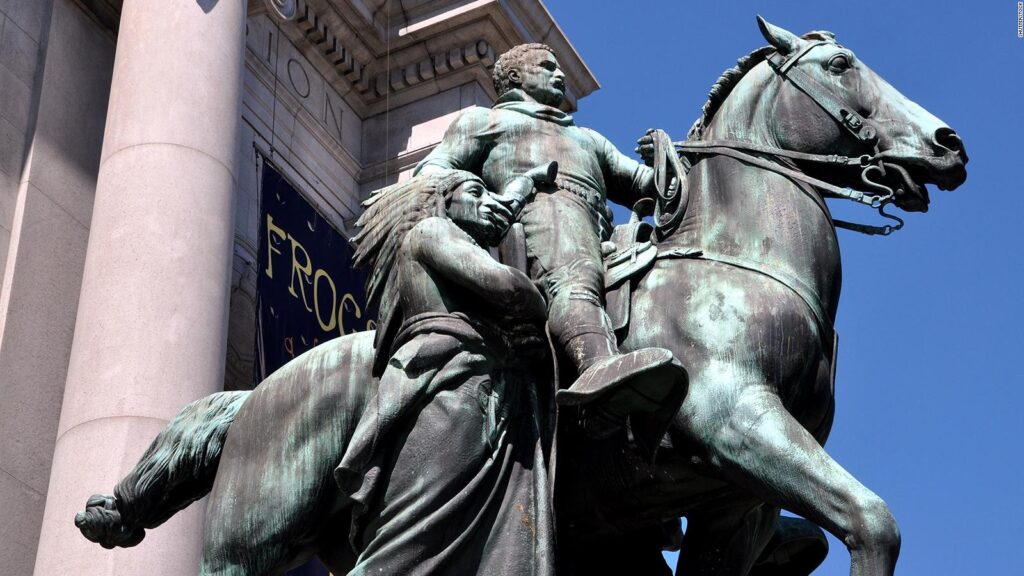By Cassandra Fairbanks
The equestrian statue of Theodore Roosevelt that sits outside the American Museum of Natural History in New York is being removed.
The decision to remove it was made on Monday after a unanimous vote by the New York City Public Design Commission.
The statue received criticism last year during the Black Lives Matter riots, as people claimed that it was “racist” and a symbol of colonialism due to Roosevelt being depicted on a horse leading African and Native men who are flanking his sides. Even Mayor Bill DeBlasio got involved, saying that it was “problematic.”
“The American Museum of Natural History has asked to remove the Theodore Roosevelt statue because it explicitly depicts Black and Indigenous people as subjugated and racially inferior,” New York City Mayor Bill de Blasio said at the time. “The City supports the Museum’s request. It is the right decision and the right time to remove this problematic statue.”
During Monday’s meeting on the issue, Sam Biederman of the New York City Parks Department said that although the statue “was not erected with malice of intent,” its composition “supports a thematic framework of colonization and racism,” the New York Times reports.
The two men are not meant to represent individual people, but continents, which used to be a common practice in the art of statues. The statue was dedicated to Carl Akeley, a man considered to be the father of modern taxidermy, who had accompanied Roosevelt on a year-long expedition to Africa.
James Earle Fraser, the creator of the statue, designed it specifically to sit at the entrance to the Museum’s hall of dioramas, which is dedicated to Akeley.
Fraser said that “the two figures at [Roosevelt’s] side are guides symbolizing the continents of Africa and America, and if you choose may stand for Roosevelt’s friendliness to all races.”
Supporters of the statue have argued that Roosevelt was an early champion of civil rights and equality for black and Native Americans during the early 20th century. It is well known that he was close to Booker T. Washington and appointed Minnie Cox as the first black regional postmaster in the United States.
“The understanding of statues and monuments as powerful and hurtful symbols of systemic racism became even more evident in the wake of the movement for racial justice that emerged after the murder of George Floyd,” Dan Slippen, vice president of government relations at the museum, said at the meeting. “It has become clear that removing the statue would be a symbol of progress toward an inclusive and equitable community.”
Museum president Ellen V. Futter claimed the decision did not reflect a judgment about Roosevelt, but was driven by the sculpture’s “hierarchical composition”
For corrections, please email [email protected]

